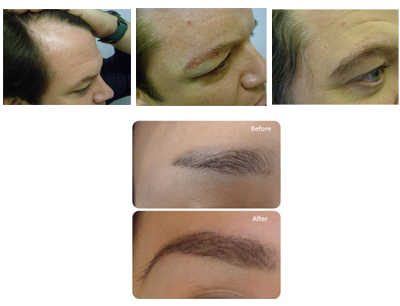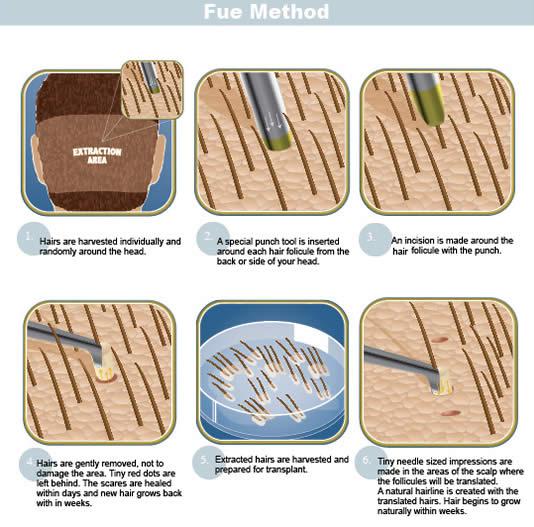editor
Eyebrow & Moustache
transplant at Sure Hair's Toronto clinic located at 2115 Finch Ave West, Suite #401, Toronto, ON M3N 2V6

Eyebrow, Moustache Transplant & Scar Repair
Eyebrow transplant is fast becoming one of the most sought after treatments in hair restoration nowadays. One reason for the increase in demand is because the treatment can now be done easily using the new FUE technique. It is minimally invasive and healing time is fast.
Many people have very thin eyebrows or no eyebrows at all. Some women may have used the tweezers too abusive. Technology hair transplantation to replace eyebrow hair follicle occurs both in order to produce beautiful natural results. We use special microscopes to collect excellent hair follicles. They are taken from the patient’s own head and then be transplanted into the eyebrows and produce a perfectly natural.

Method “Uni-Strand ®” o u “FUE” can be used for this type of transplant. The doctor and his staff take the hair from the donor area (usually at the back of the patient’s head) by removing each hair follicle, one by one. Each follicular unit is taken with a small stream. The advantage to this method is that the doctor does not cut in an area. Healing is faster and there are no stitches.

Transplantation of the beard and mustache
Facial transplants are among the innovations on the rise in hair transplant techniques. Most frequently, clients request transplants at the beard and mustache.
We recently performed a hair transplant on some retired hockey players in the NHL. Not only do we have redistributed their scalp hair, but we made some Grafts face (due to wounds received in hockey). In many cases, a patient may require extra hair in the facial region as a result of scarring, accidents, uneven growth or a desire to have a greater density at the beard and mustache .
Usually, we use hair directly to the scalp. They more closely resemble the facial hair. Beard and whiskers tend to grow individually while the hair grows in multiple groups. Transplanting hair beard or mustache, these areas are conducive to deliver better results.
For transplanting a hair to the face, should be removed in the region of the donor, a hair to be redistributed in the facial area. Once the hair is removed, they are isolated under a microscope. Subsequently, we began implementation. As the graft is performed correctly, the patient should not have any scar in the donor area. Facial transplants are virtually indistinguishable to those of existing facial hair.
As the standard hair transplant, the patient will receive a transplant facial begin to notice the tiny crusts where the grafts were placed. Crusts last week and fall by themselves. We estimate that approximately 70% of grafts transplanted fall behind 30% of healthy hair and initially undetectable. In 12 months, 100% of the hair will grow.
Transplantation for scalp scars
Scalp and facial scars caused by burns or accidental trauma can be easily remedied with follicular unit transplantation. In general, newly transplanted hair will grow normally, and, as the scar is hypertrophic. To determine if the scar is hypertrophic, do not hesitate to ask Dr. Ferreira. Usually, for the best possible results, our staff recommends between one to two sessions. Hair transplant disguise those area. However, the scar tissue will remain there.
Have a correction or facial scarring with hair transplantation is a fantastic way when you want to correct and conceal scarring. Dr. Ferreira and staff generally recommend between 6-8 months to get a result. Usually, the procedure is easier if the scar is smaller due to the fact that transplants can be obtained through an incision.
The eligibility of patients for transplant scar the scalp is intended for customers who have past injuries, surgeries related to scarring due to burns or cosmetic surgery. The scarring of the scalp differs from related causes hair loss. Indeed, it is never due to a lack of dihydrotestosterone in the follicle (or if propecia alopecia).
This procedure is completed by extracting tiny grafts in a safe area of the head (usually the rear). Subsequently, it inserts the hair in the area to receive. Due to huge improvements in the field of hair restoration over the past five years, techniques have been developed and allow our staff to reproduce a growth of hair with a natural effect. Such methods have become increasingly popular with clients who suffer from scalp or facial scarring

